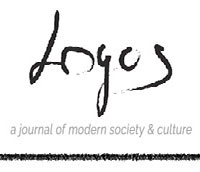Stuart Ewen and Elizabeth Ewen, Typecasting: On the Arts and Sciences of Human Inequality
This book is like so many others. It is made of paper, full of text and pictures, and bound together with a hard cardboard cover. It is a stereotype, a copy, familiar and trite. The book does not know it is a stereotype, however. It cannot gain or lose by being reduced to the simplified category of books. Humans, however, usually do gain by the perception of this object as one more “book.” Those who wrote, produced, and sell it gain fortune and fame. Those who buy and read it gain knowledge and more from possessing it. Is typecasting natural and inevitable? Has stereotyping always existed? Is it possible as David Cronenberg once said that “all stereotypes turn out to be true?”
This wonderful book provides 500 pages that document the idea that because people are not books, stereotyping has never been a neutral process. It presents a rich and comprehensive history of the evolution of stereotyping in Western society and the impact it has had on criminals, the poor, racial/ethnic groups, and women. It provides a striking and detailed record of how the predilection to place humans into simple categories has not only often proved wrong but has been mostly harnessed to colonial, repressive, and exploitative purposes.
Humans may not be able to avoid stereotyping. It may even be an unavoidable mental tool for processing information in complex environments. Ewen and Ewen argue, however, that stereotyping has taken a particularly destructive form in the West. Here, the categories developed to account for human difference were set early as mechanisms for exclusion and unequal treatment. Instead of a range or spectrum of difference, Europe and the U.S. created discrete, separate types. More specifically, Africans, criminals, and others were placed into sub-human categories. Instead of a continuum of differences between these populations, the West perceived discrete differences between black and white, rich and poor, as well as foreigners and native American citizens. These differences were often lodged in physical characteristics, marking some people as worthy of being in the category of civilized humans and others not.
This book has very little theory. It is mostly an account of the long history of stereotyping. It is exhaustive and fascinating. Readers will learn about the connections between the eugenics movement in the U.S. and Hitler’s efforts to sterilize and eliminate the Jews. There is a fascinating account of how the emergence of black minstrel shows in the mid 19th century served to reinforce white racism. The theoretical reflections in the book are brief and tied to historically significant changes in stereotyping. Thus, the authors discuss Walter Lippman’s critique of the eugenics movement and the rise of the IQ test because Lippman coined the word “stereotyping” in 1922. The lack of theoretical analysis does not weaken the book, however.
The incredible amount of information and history in this book provides tremendous opportunities for testing and examining many theoretical arguments. The discussion of poor people’s use of slang provides great examples of Foucault’s concerns with the role of naming in the creation of power. In another example, they show that Roget’s invention of the thesaurus did more than create a writer’s tool. The thesaurus was also infused with “an imperial and hierarchical worldview.” Synonyms for democracy, for example, included “low life” and “trash.” Those interested in Goffman’s or Lakoff’s modern theoretical formulations of “framing” will learn about its roots in the authors’ discussion of the evolution of photography and the role of definitions in perception.
One of the most interesting insights of this book is an indirect product of the authors’ detailed account of the history of phrenology, cranial measurement, and natural history museums in the 19th century. They show how capitalist trade and expansion into places in the world that had been mostly obscure to Western eyes in the past led to the emergence of private collections of artifacts and pictures that later evolved into natural history museums. Wealthy Europeans and Americans created these collections, called “curiosity cabinets,” in an attempt to account for and explain their encounters with strange new people in foreign places. These collections, however, became instruments for attributing impurity and degradation to these strange new people. This racist and imperialist project was important for other reasons, however.
Stereotyping has some origin in science, at least the kind practiced in the 18th and 19th centuries. The Ewens provide a marvelous history of the careful, quantitative, and methodical approach taken by 18th century individuals who sought a deterministic, scientific basis for social inequality and hierarchies. Thus, they describe the efforts of one Johann Caspar Lavater, a Swedish Protestant minister, who dedicated his life to developing a physiognomic technique for determining what shape of nose or ear indicated moral degeneration. That science could be hitched to narrow prejudices and artful imagination is nothing new. Such efforts to meld science to imperial and racist conceits do point, however, to the emerging cultural weight of science. Science’s weight was able to bend most efforts at gathering truth, even stereotyped ones, to its methods. These findings also suggest the need for greater caution in accepting, at face value, the scientific foundation of contemporary intelligence and aptitude testing.
All in all, there is much to like about this book. What it lacks in theoretical argument it more than makes up with rich historical heft, which was the intent of the authors in any case. I recommend it highly for courses in racial and ethnic history, civil rights, and social inequality. It is a very educational, interesting and fascinating read.

